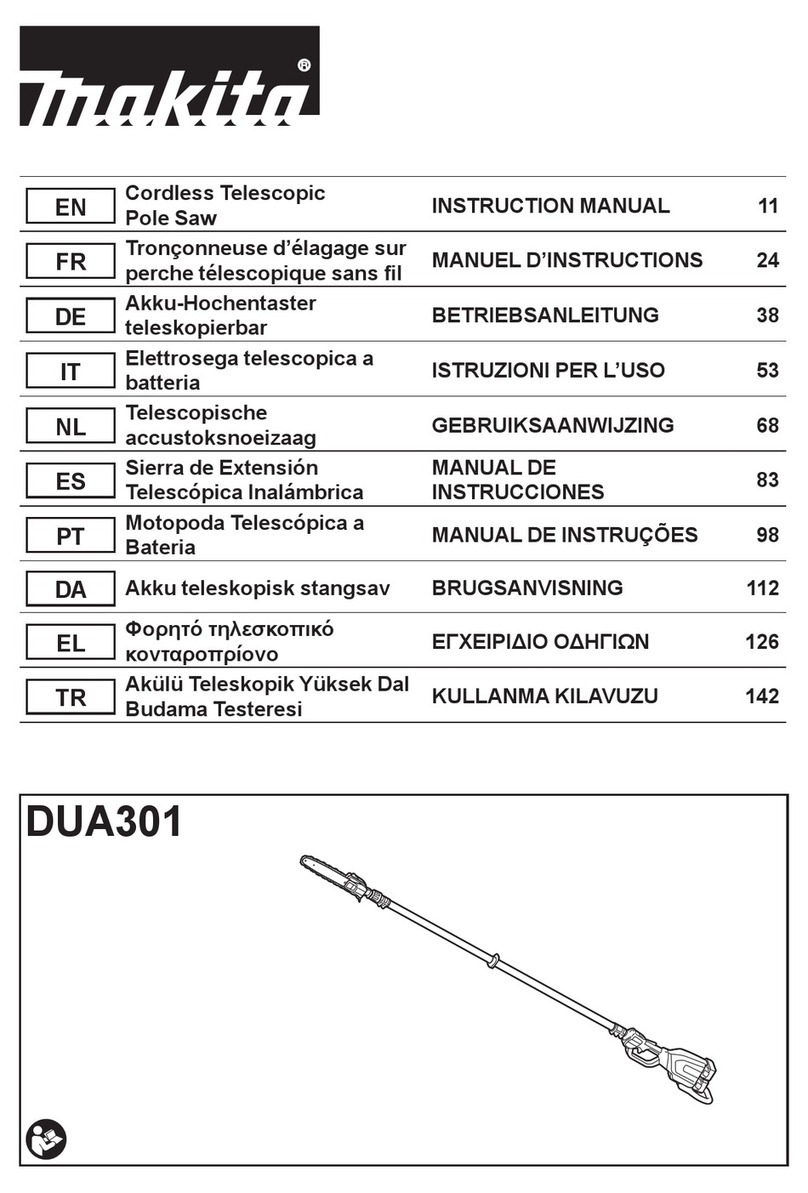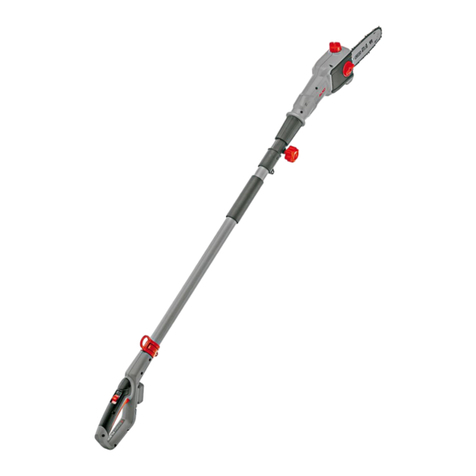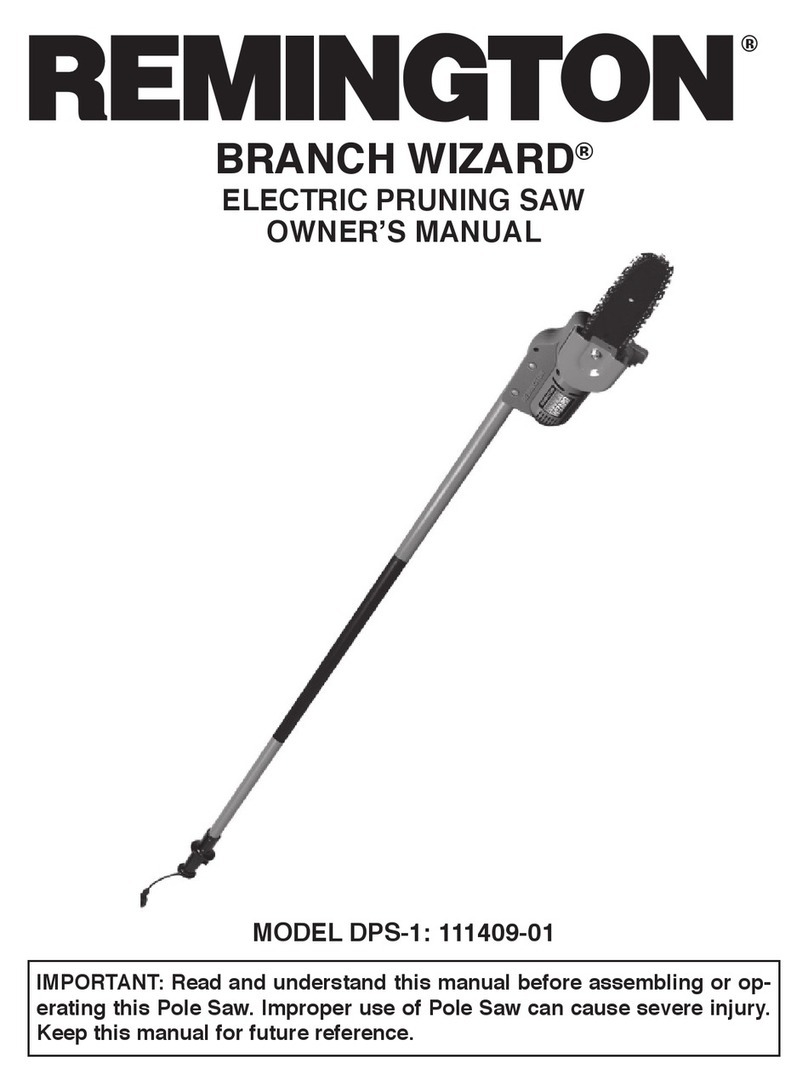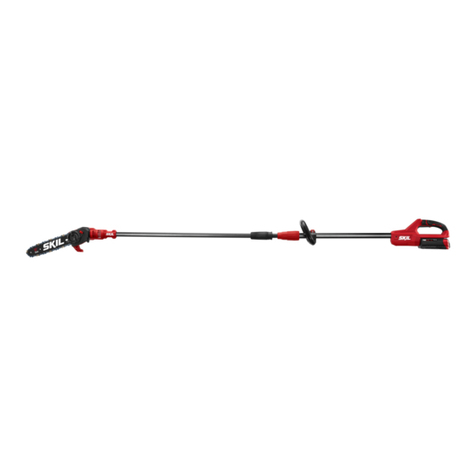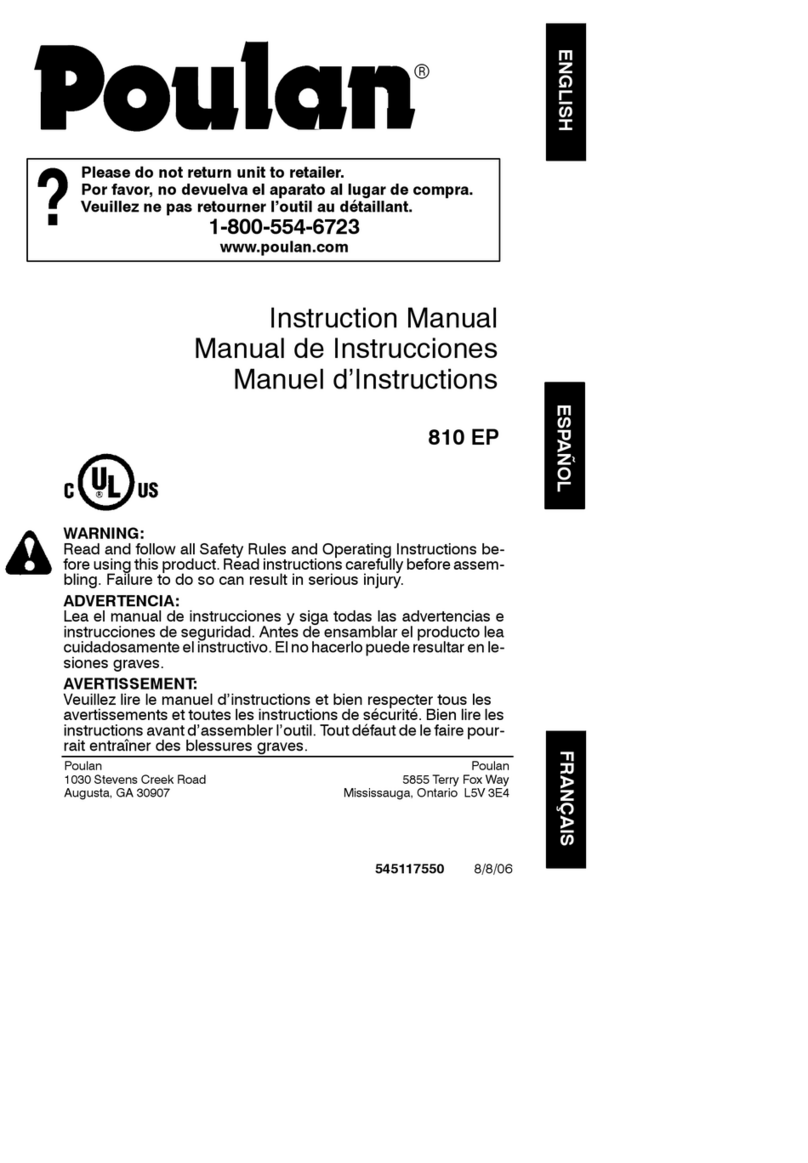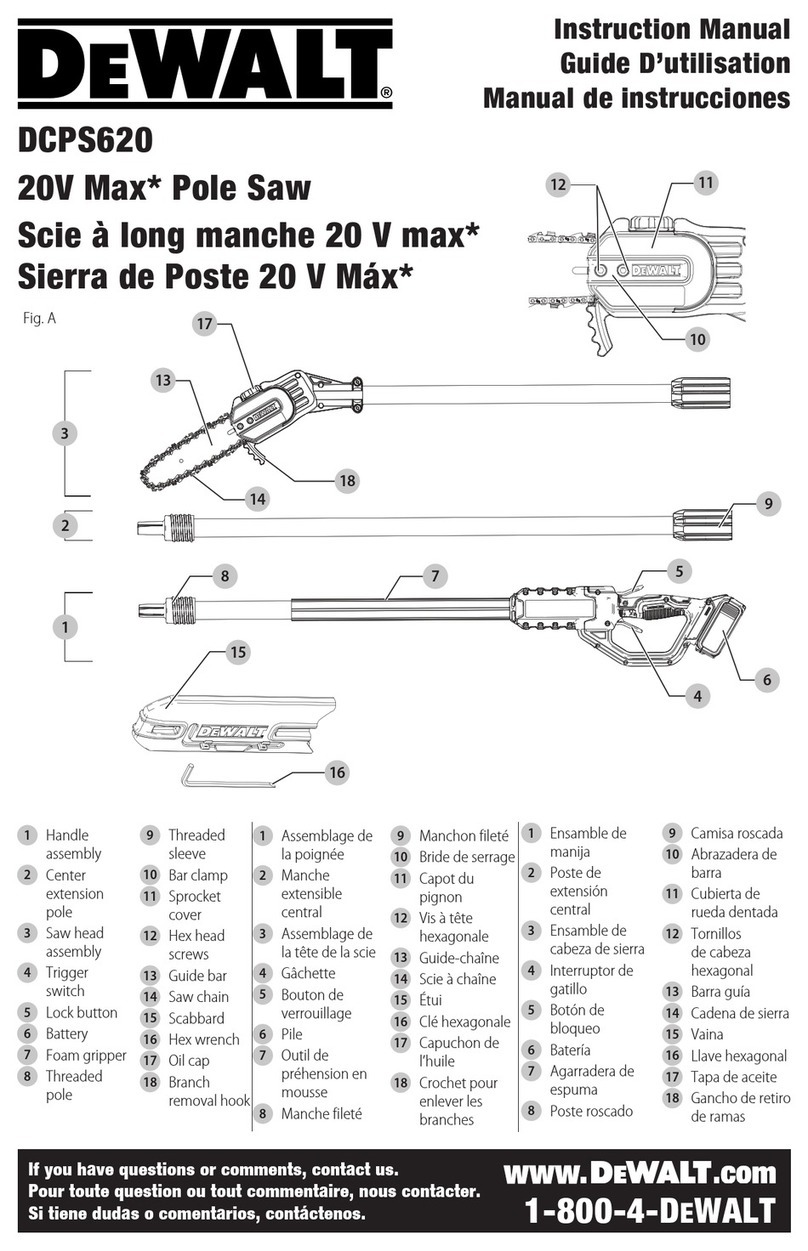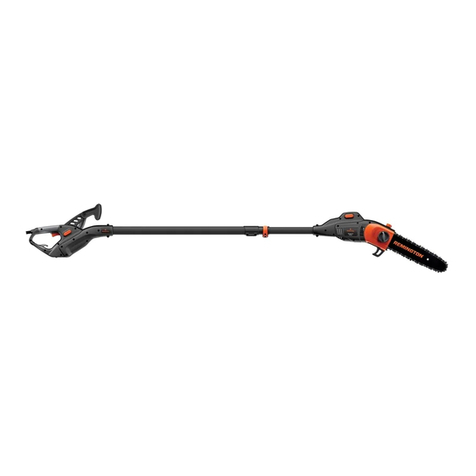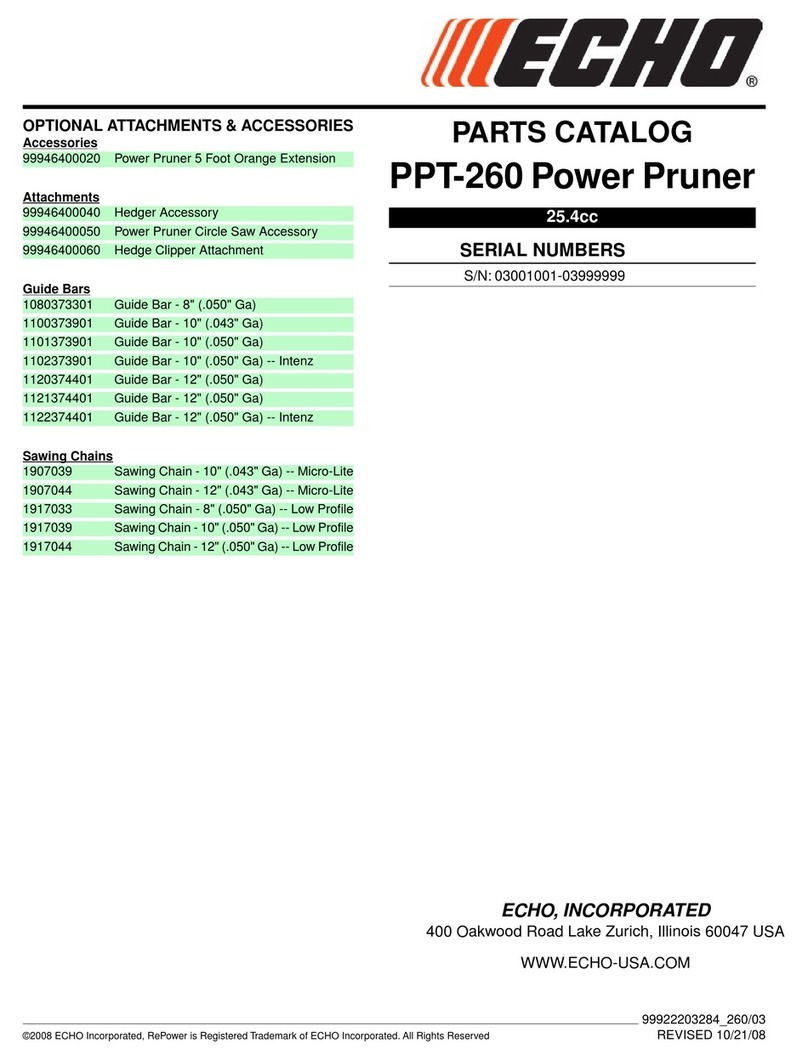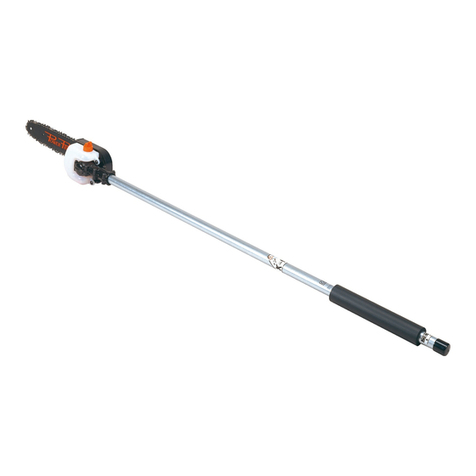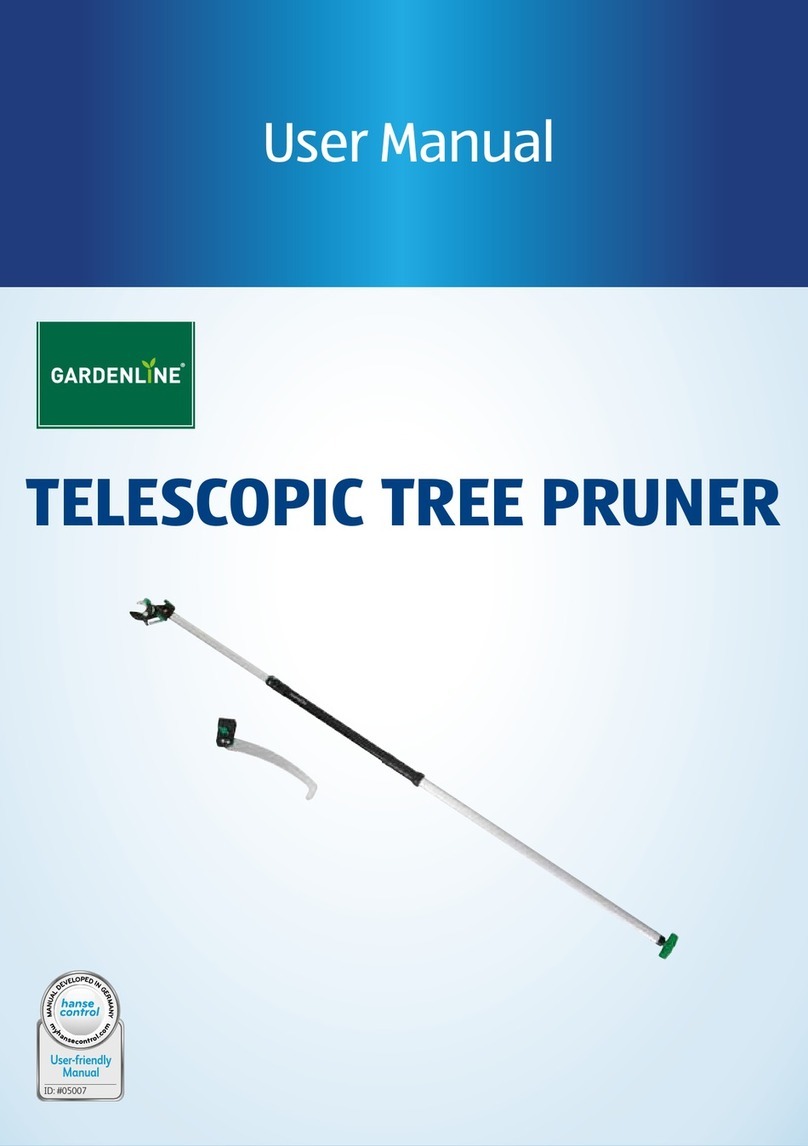
2
0650
EU Declaration of conformity
Cordless pole saw/pruner Article number
We declare under our sole responsibility that the stated products comply with all
applicable provisions of the directives and regulations listed below and are in
conformity with the following standards.
Déclaration de conformité UE
Élagueuse sur perche sans fil Numéro d’article
Nous déclarons sous notre propre responsabilité que les produits décrits sont en
conformité avec les directives, règlements normatifs et normes énumérés
ci-dessous.
EU-Konformitätserklärung
Akku-Hochentaster Sachnummer
Wir erklären in alleiniger Verantwortung, dass die genannten Produkte allen
einschlägigen Bestimmungen der nachfolgend aufgeführten Richtlinien und
Verordnungen entsprechen und mit folgenden Normen übereinstimmen.
EU-conformiteitsverklaring
Accu paalzaag/snoeier Productnummer
Wij verklaren op eigen verantwoordelijkheid dat de genoemde producten voldoen
verordeningen en overeenstemmen met de volgende normen.
EU-konformitetsförklaring
Sladdlös stångsåg/kvistsåg Produktnummer
Vi förklarar under eget ansvar att de nämnda produkterna uppfyller kraven i alla
gällande bestämmelser i de nedan angivna direktiven och förordningarnas och att
de stämmer överens med följande normer.
EU-overensstemmelseserklæring
Ledningsfri stangsav/grensav Typenummer
Vi erklærer som eneansvarlige, at det beskrevne produkt er i overensstemmelse
med alle gældende bestemmelser i følgende direktiver og forordninger og
opfylder følgende standarder.
EU-samsvarserklæring
Trådløs stavsag/beskjærer Produktnummer
Vi erklærer under eneansvar at de nevnte produktene er i overensstemmelse med
alle relevante bestemmelser i direktivene og forordningene nedenfor og med
følgende standarder.
EU-vaatimustenmukaisuusvakuutus
Akkukäyttöinen
varsisaha/raivaussaha Tuotenumero
Vakuutamme täten, että mainitut tuotteet vastaavat kaikkia seuraavien direktiivien
ja asetusten asiaankuuluvia vaatimuksia ja ovat seuraavien standardien
vaatimusten mukaisia.
Declaración de conformidad UE
Sierra/podadora telescópica
inalámbrica Número de artículo
Declaramos bajo nuestra exclusiva responsabilidad, que los productos
nombrados cumplen con todas las disposiciones correspondientes de las
directivas y los reglamentos mencionados a continuación y están en conformidad
con las siguientes normas.
Declaração de conformidade CE
Podadora sem fios
Número do produto
Declaramos sob nossa exclusiva responsabilidade que os produtos mencionados
cumprem todas as disposições e os regulamentos indicados e estão em
conformidade com as seguintes normas.
Dichiarazione di conformità UE
Potatore telescopico cordless Codice prodotto
Dichiariamo sotto la nostra piena responsabilità che i prodotti indicati sono
conformi a tutte le disposizioni pertinenti delle direttive e dei regolamenti elencati
di seguito, nonché alle seguenti normative.
EU konformitási nyilatkozat
Akkumulátoros teleszkópos
Cikkszám
Akumulátorová
následujícími normami.
Kablosuz yüksek dal
Ürün kodu
ederiz.
Akumulatorowa
Numer katalogowy



